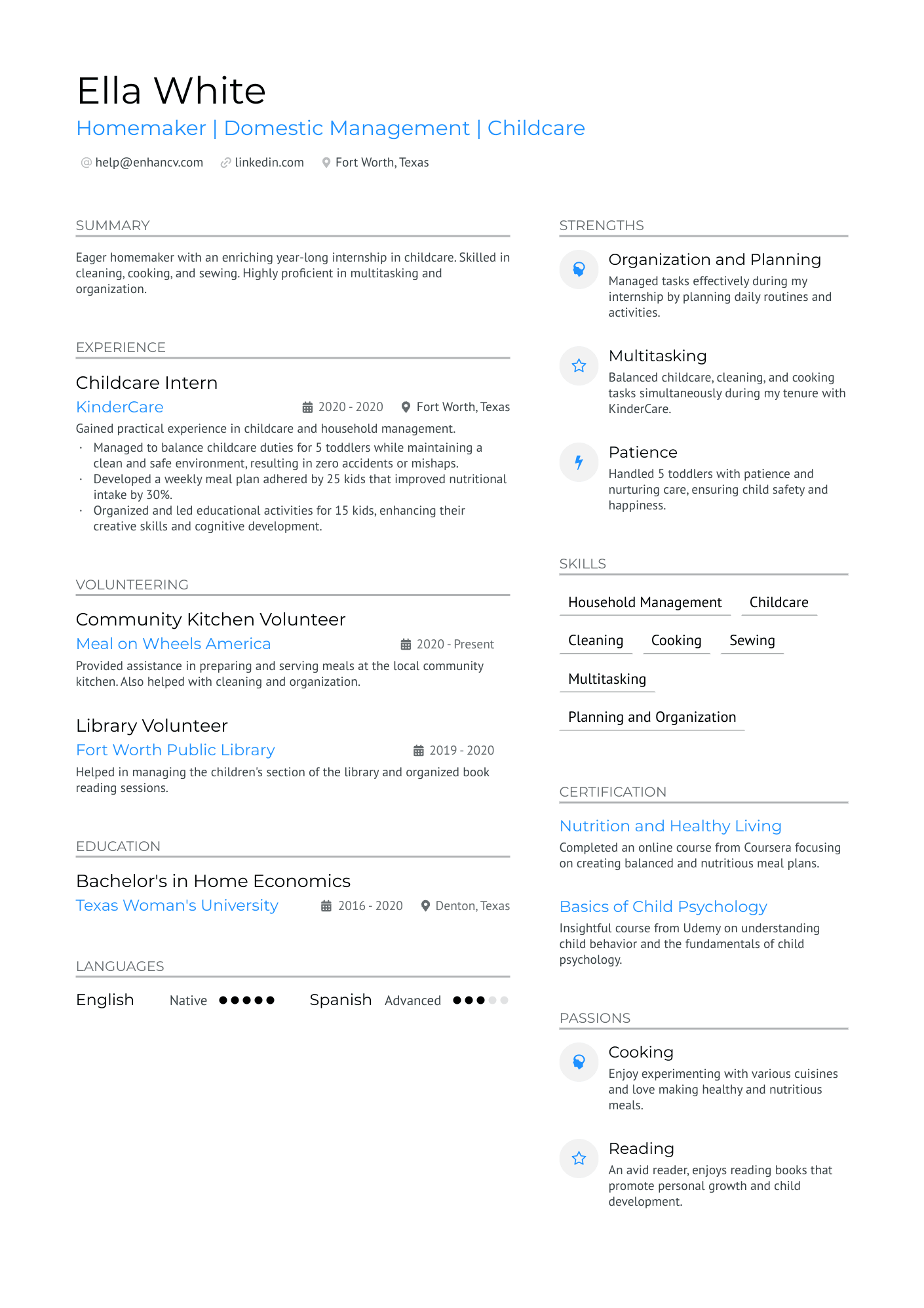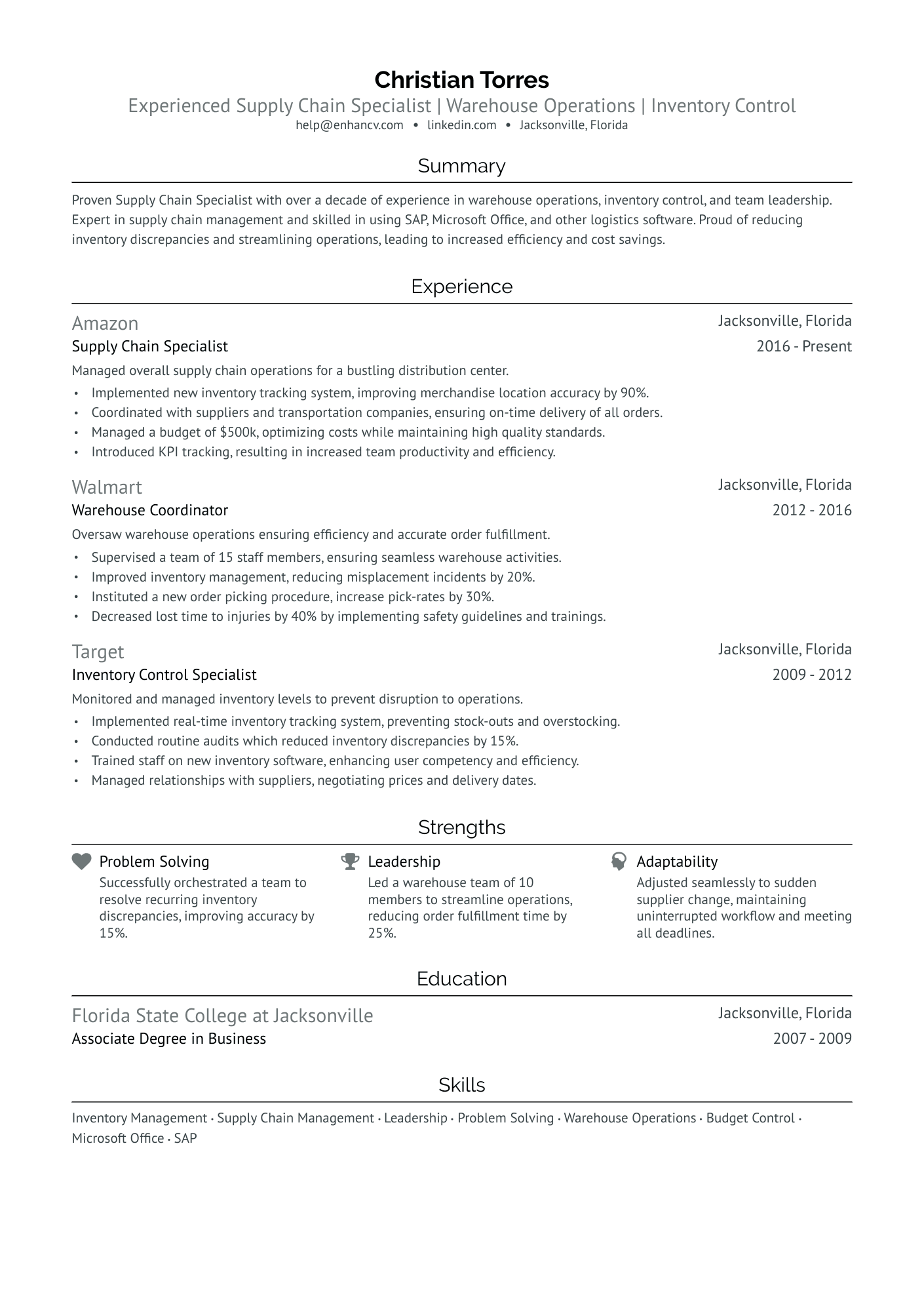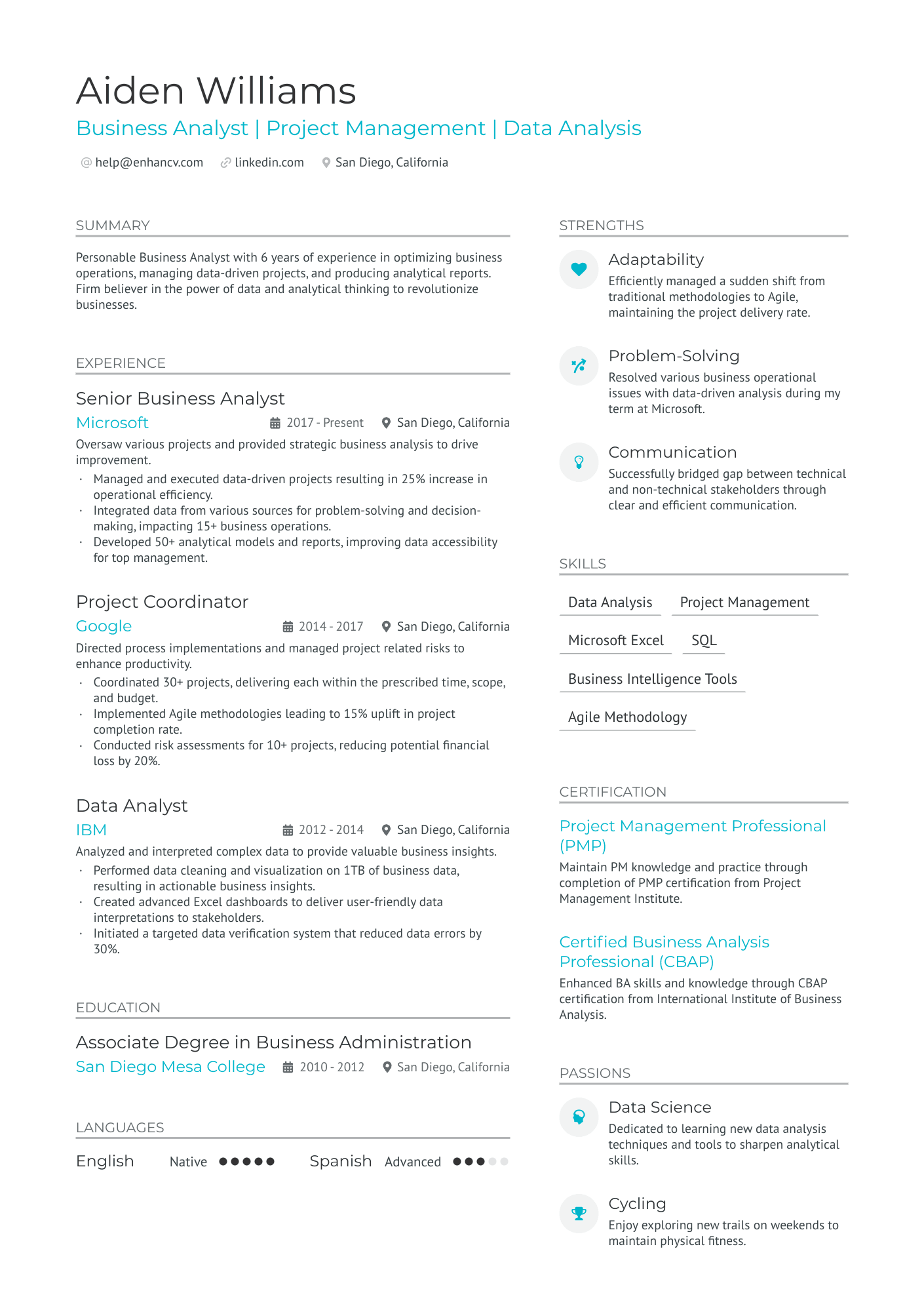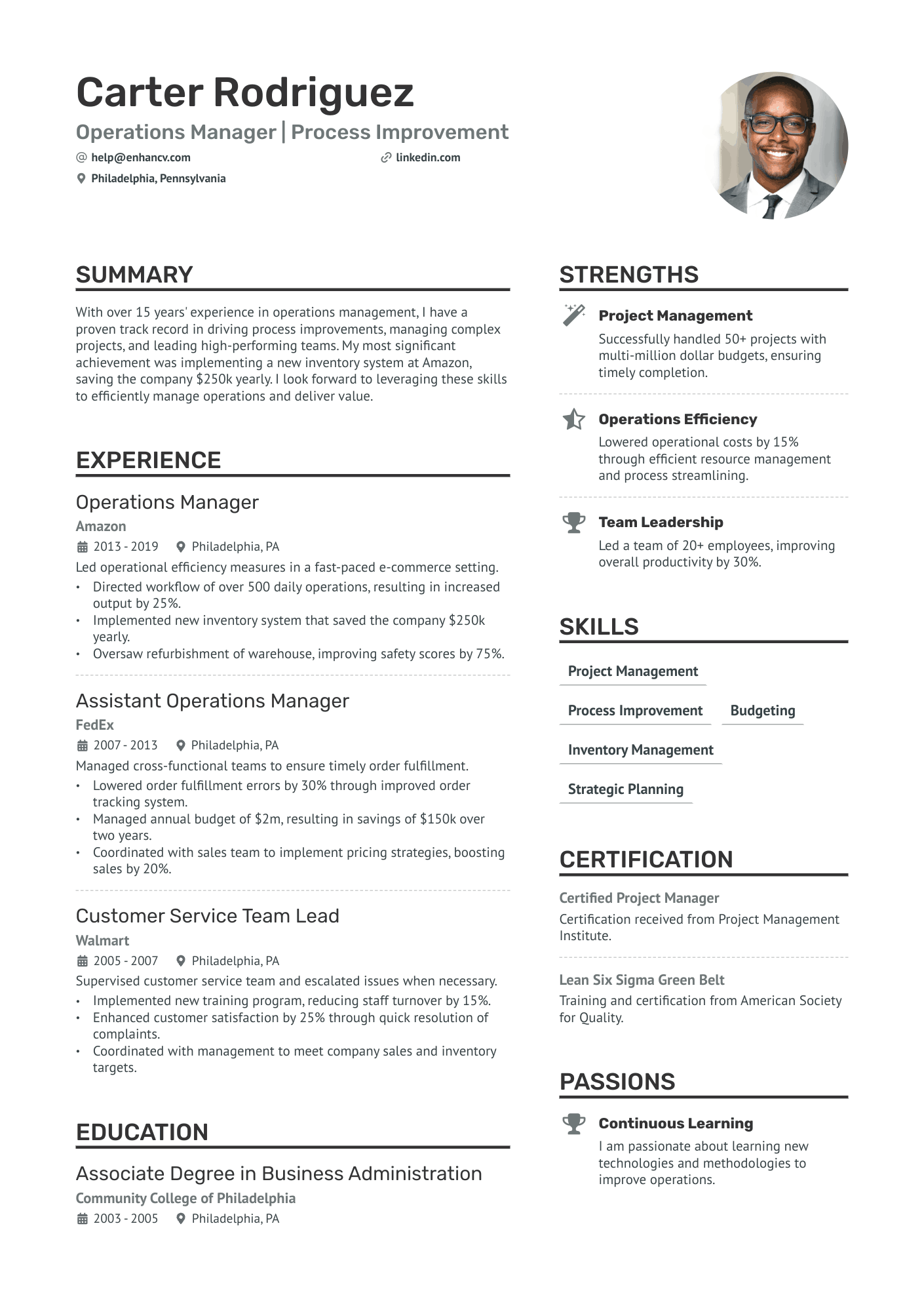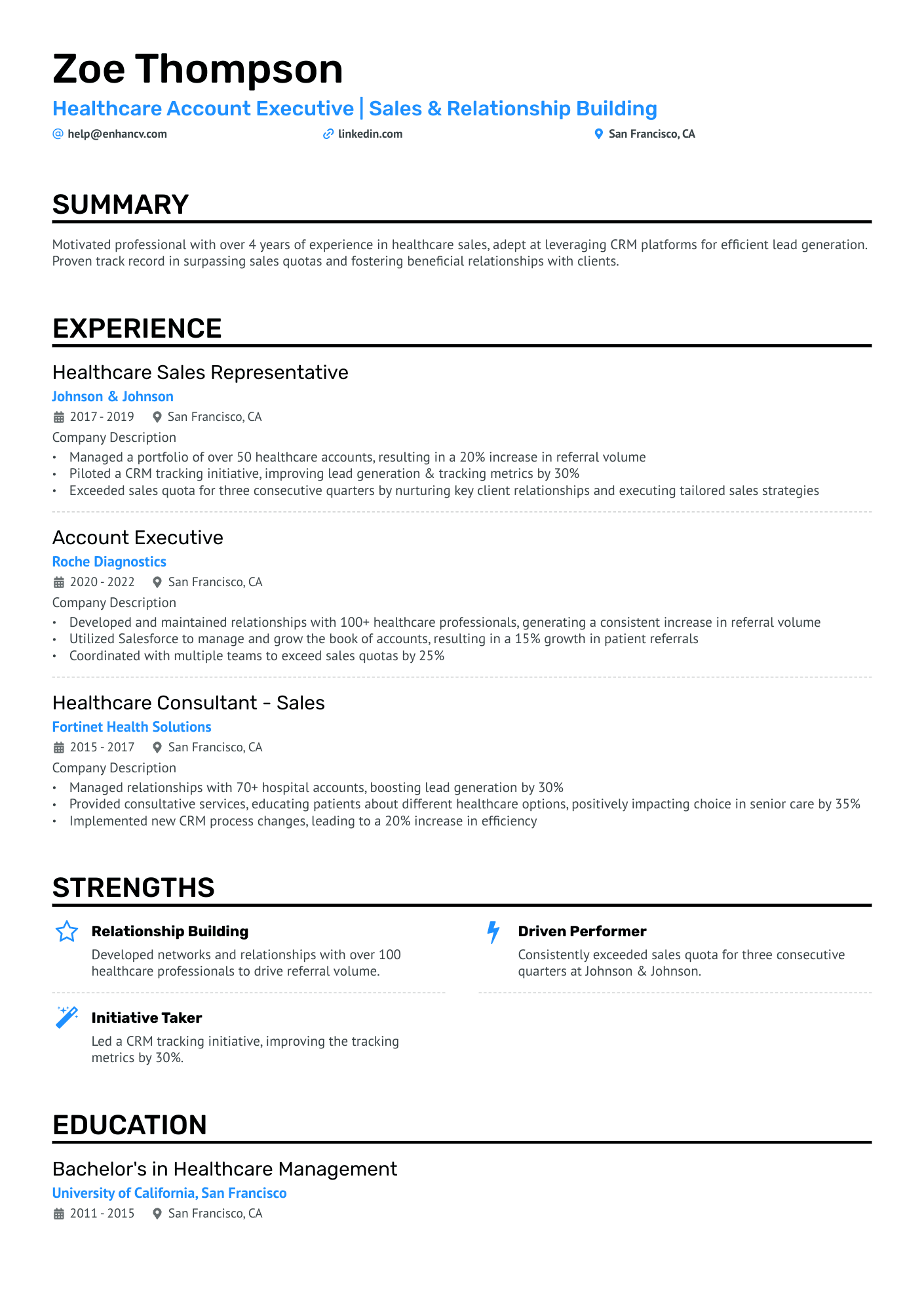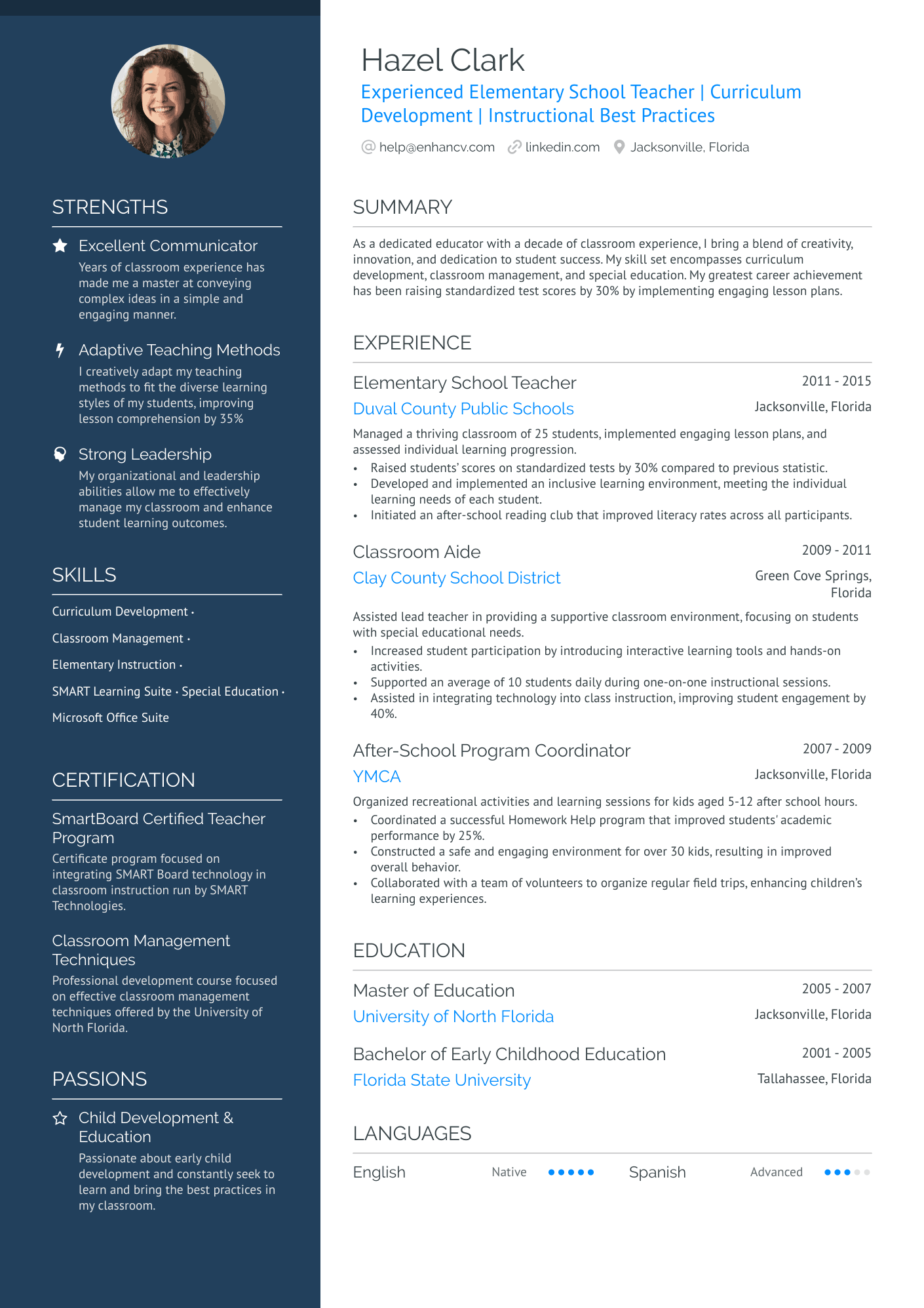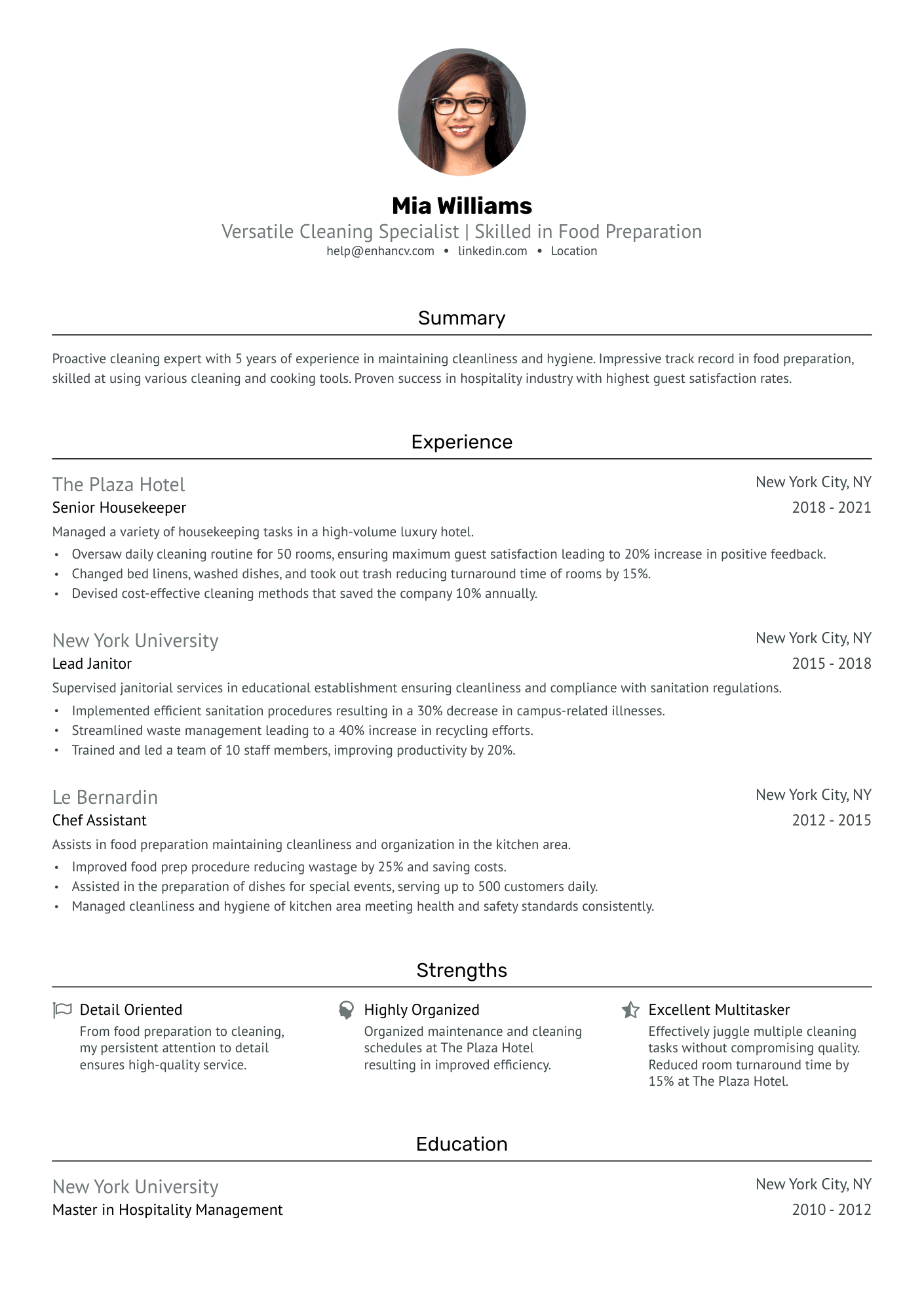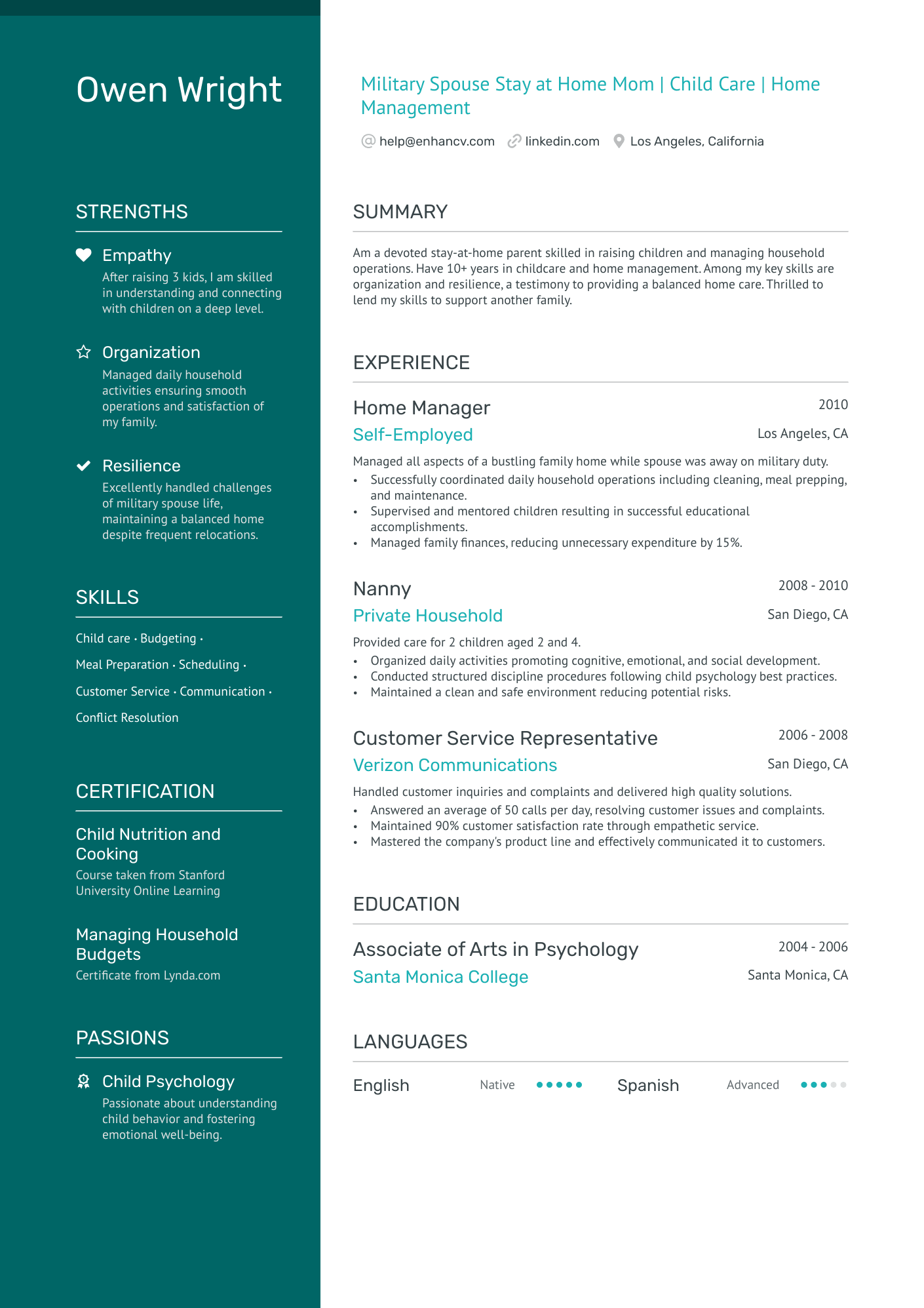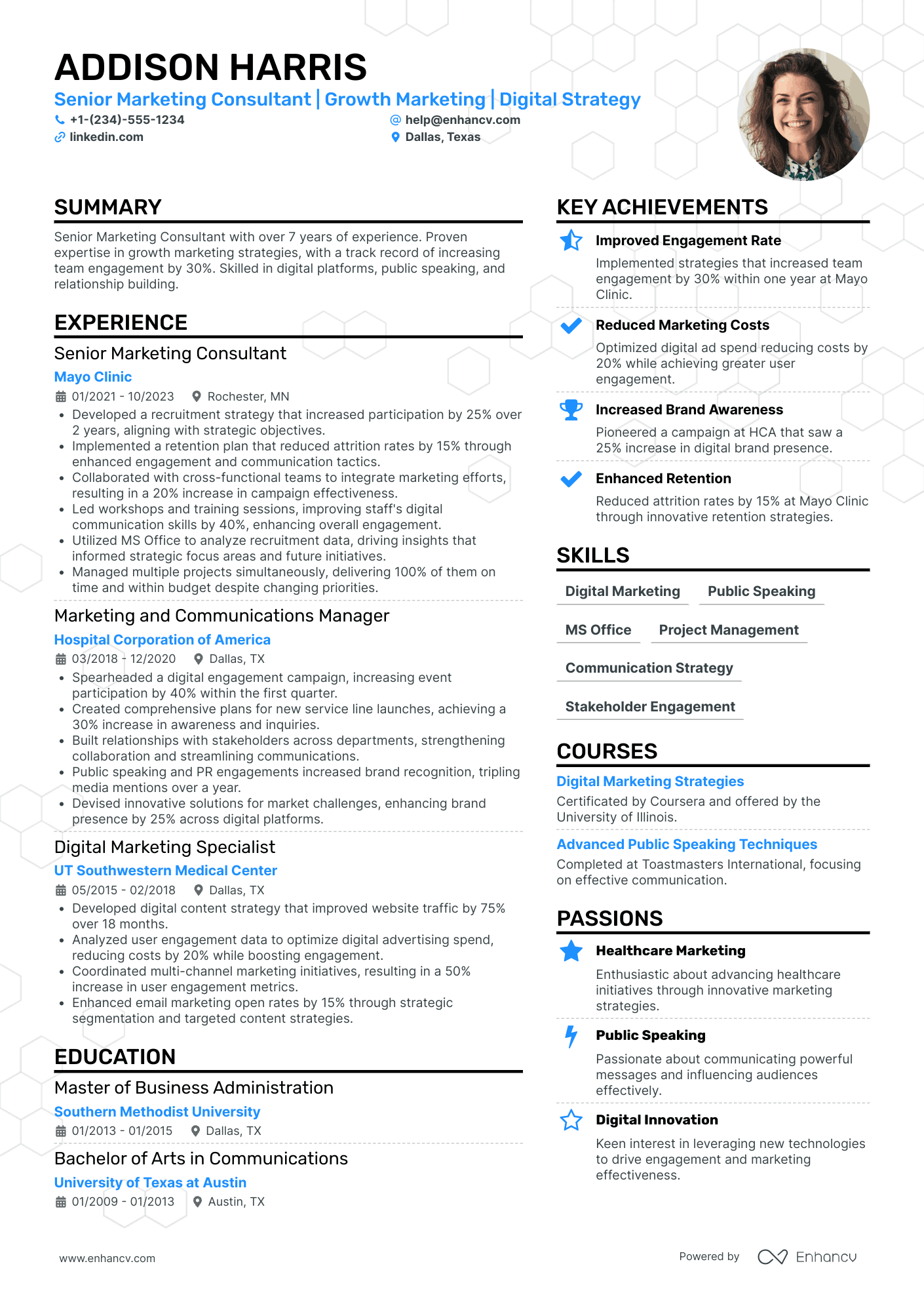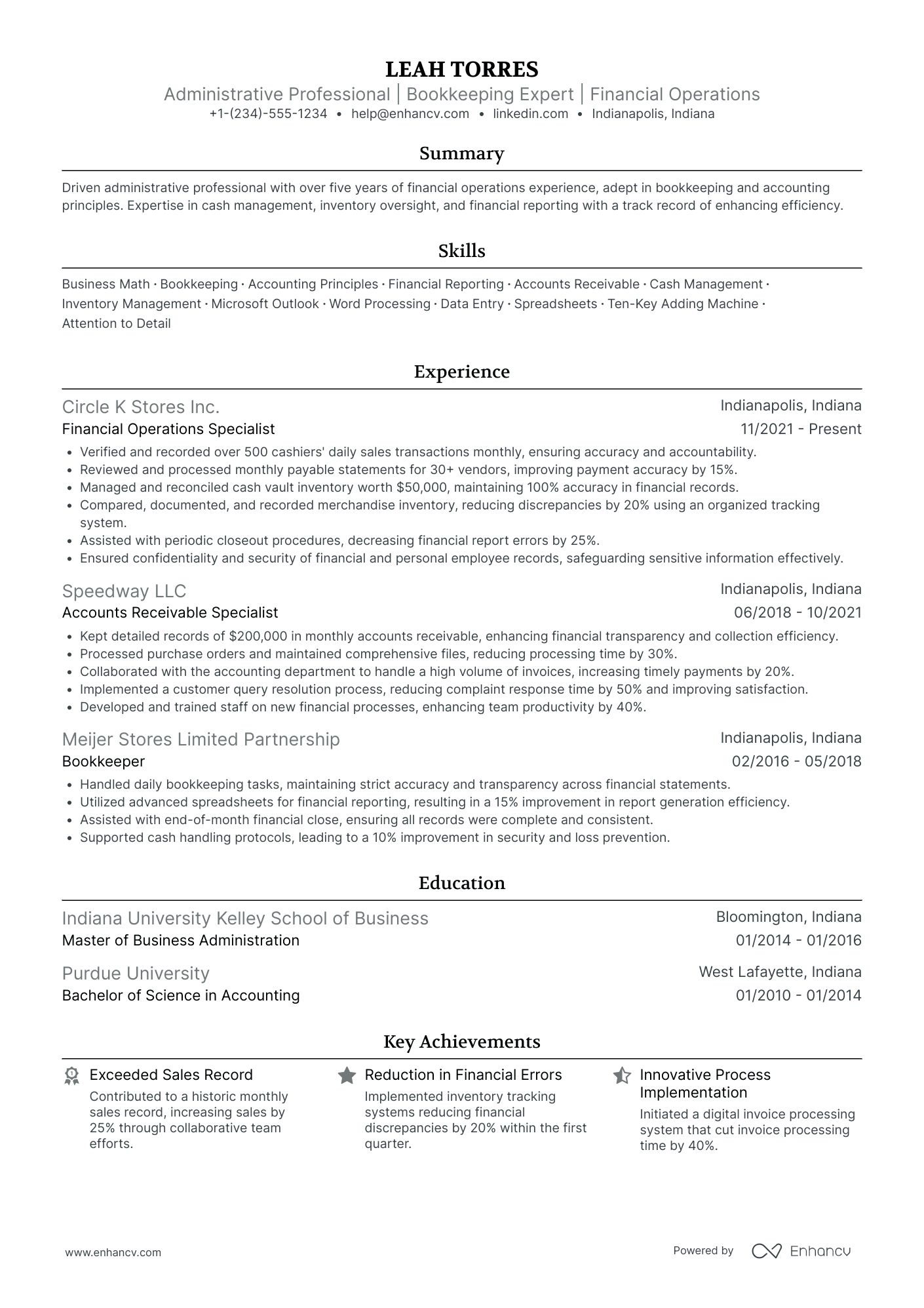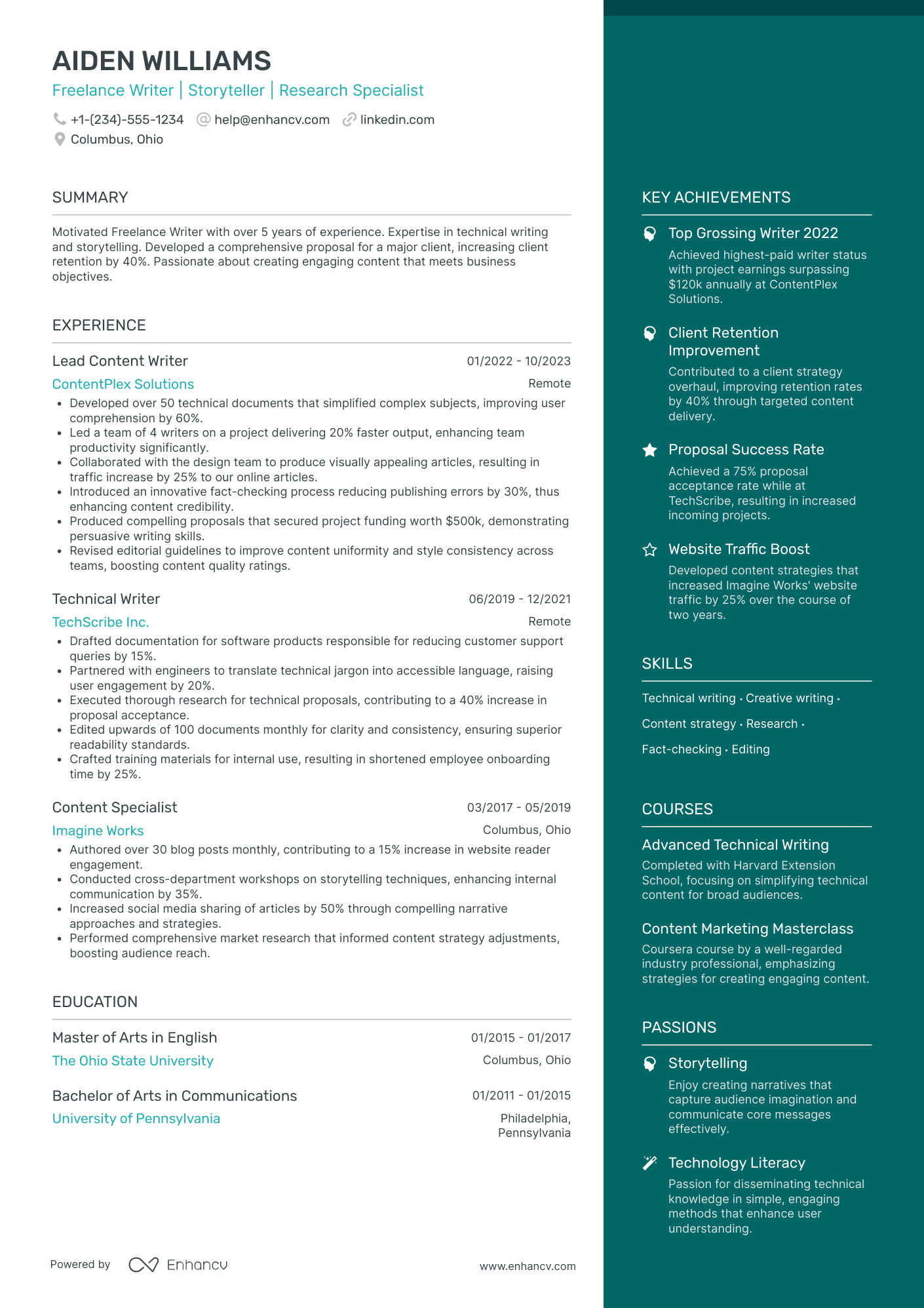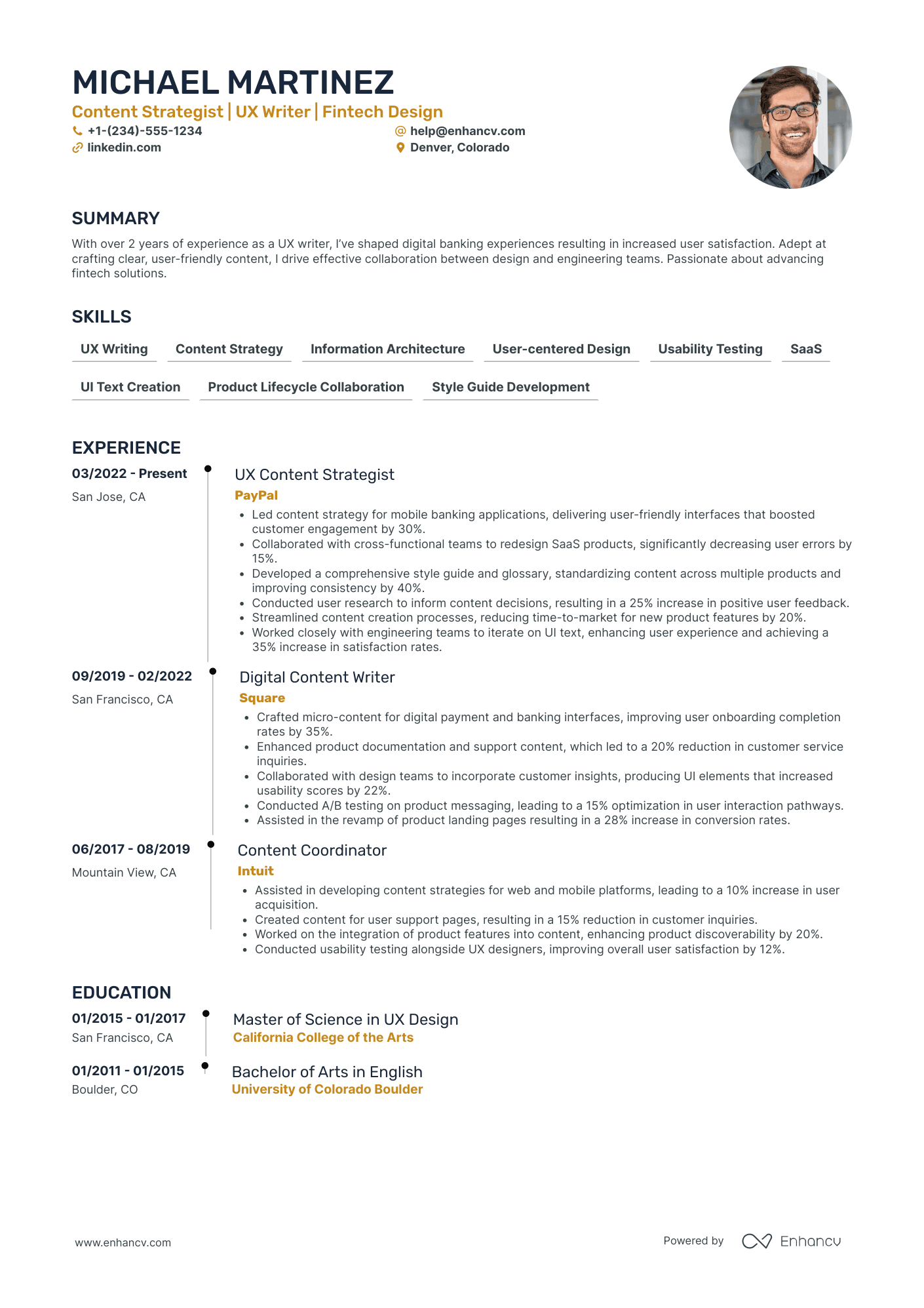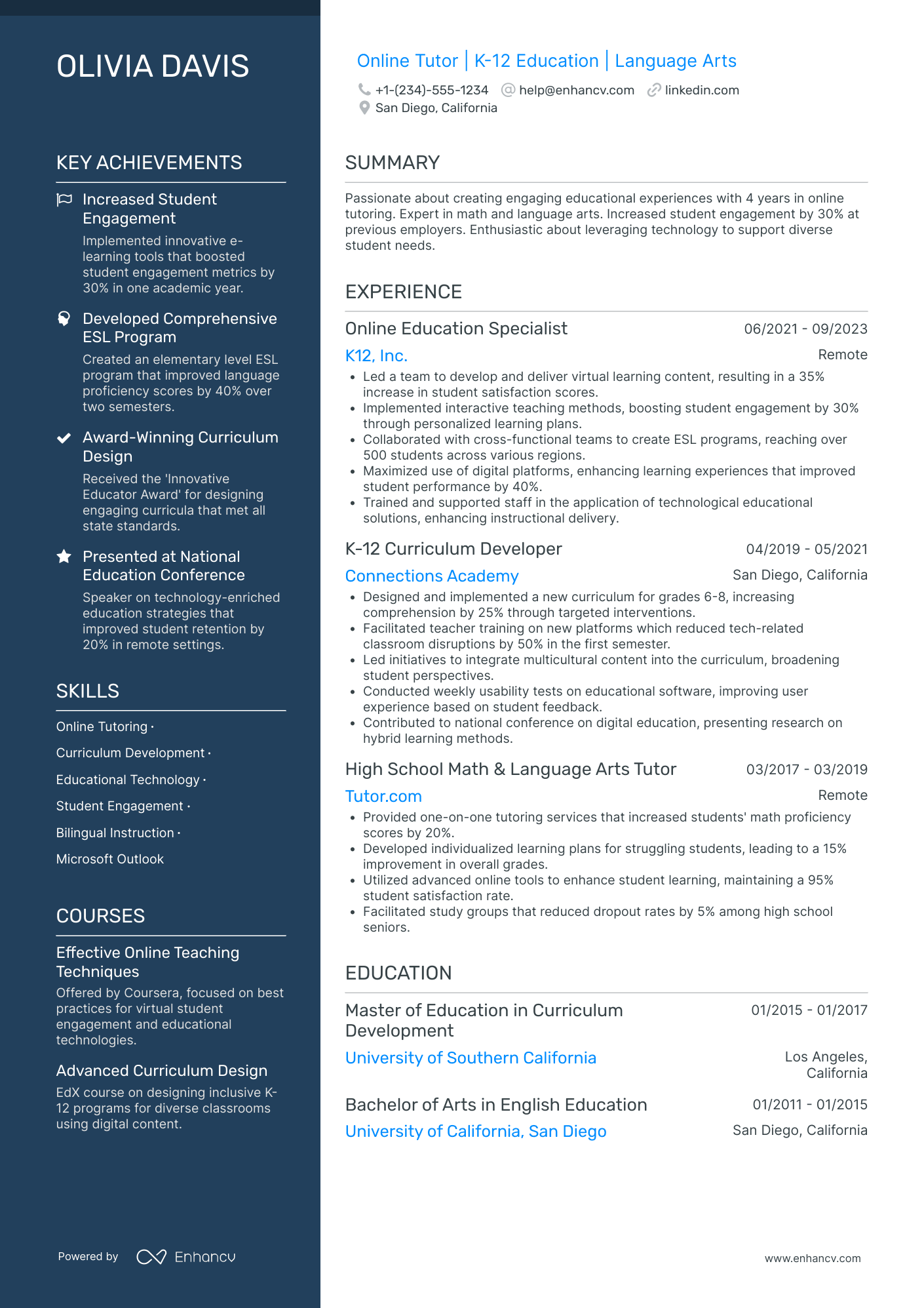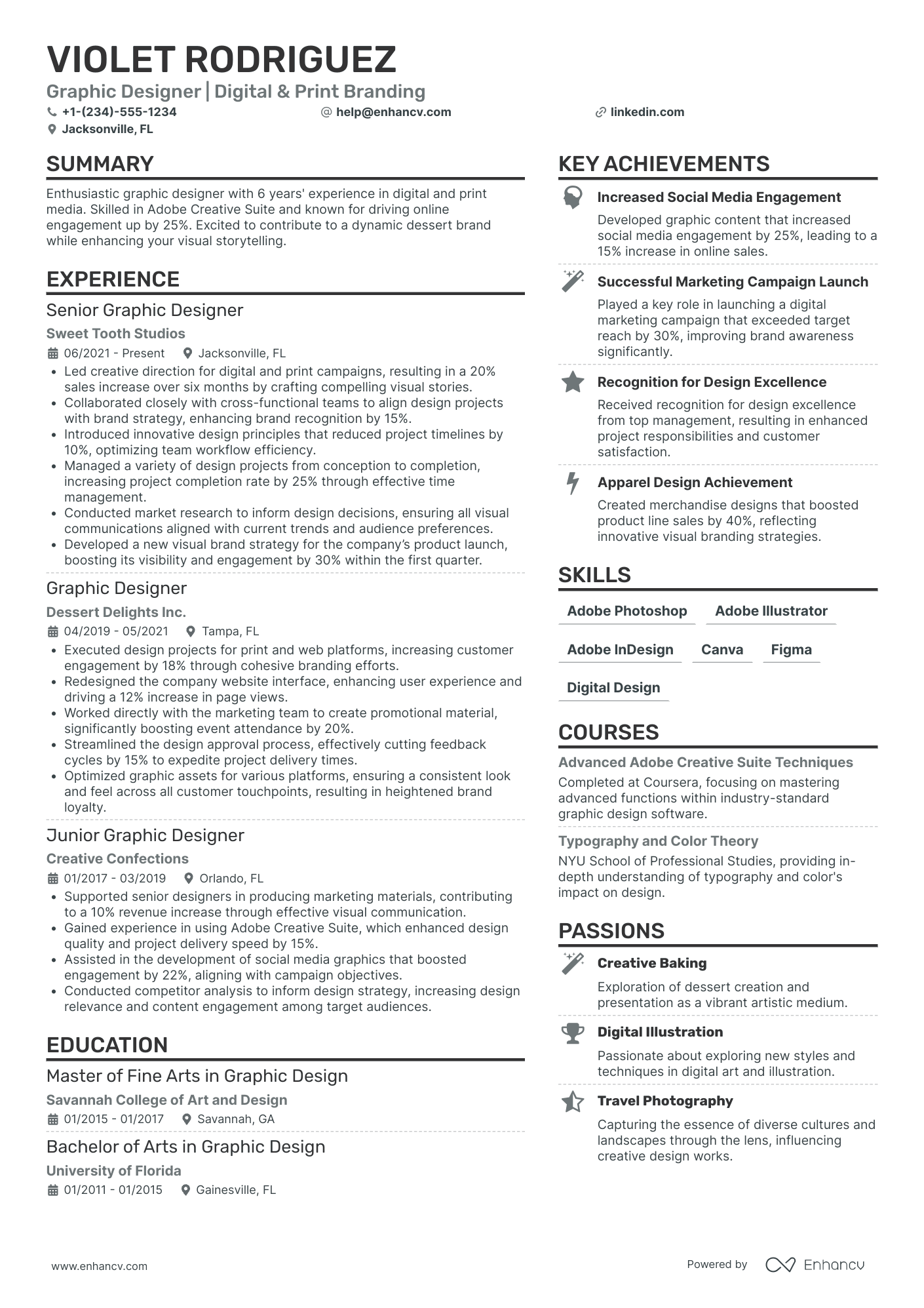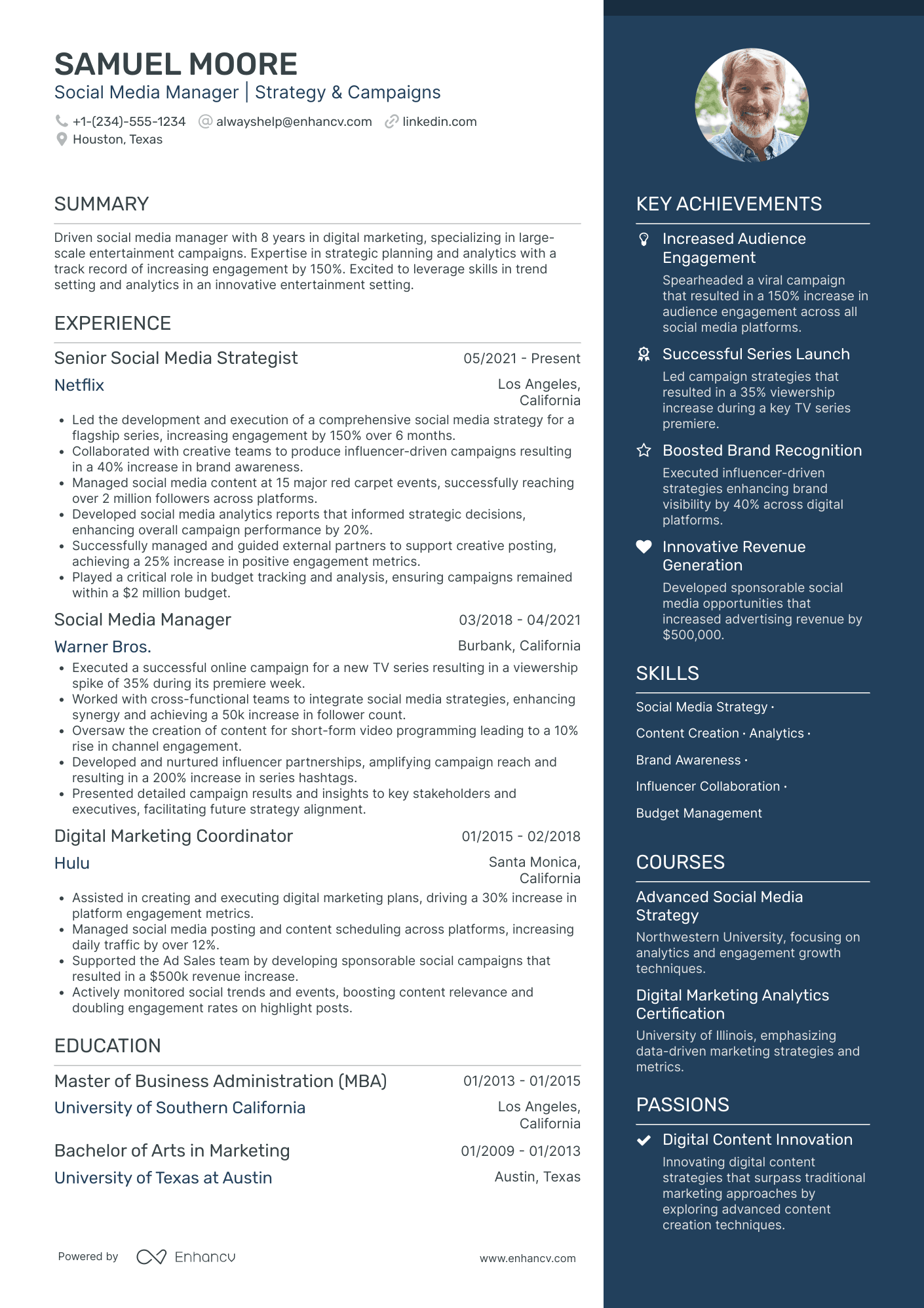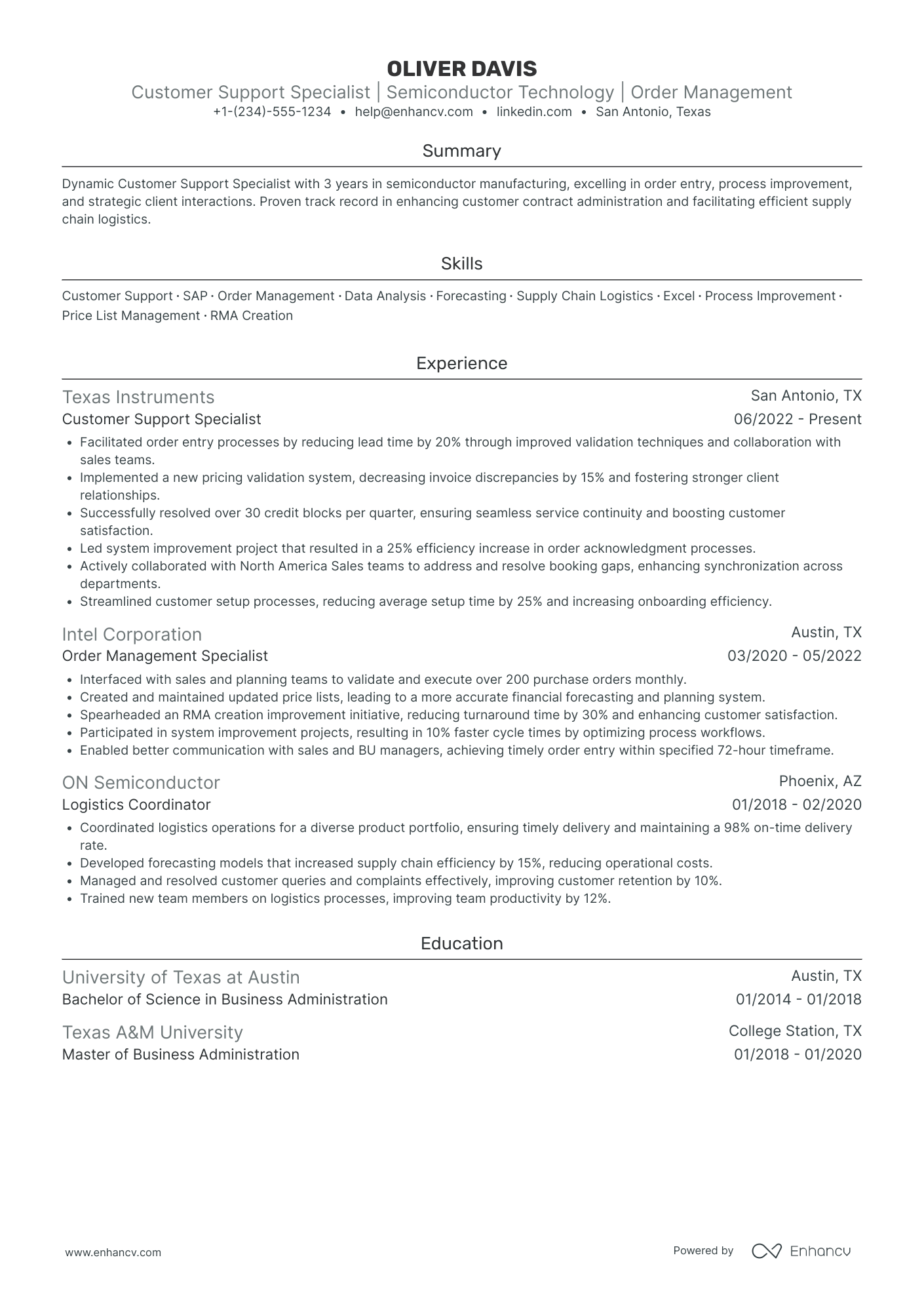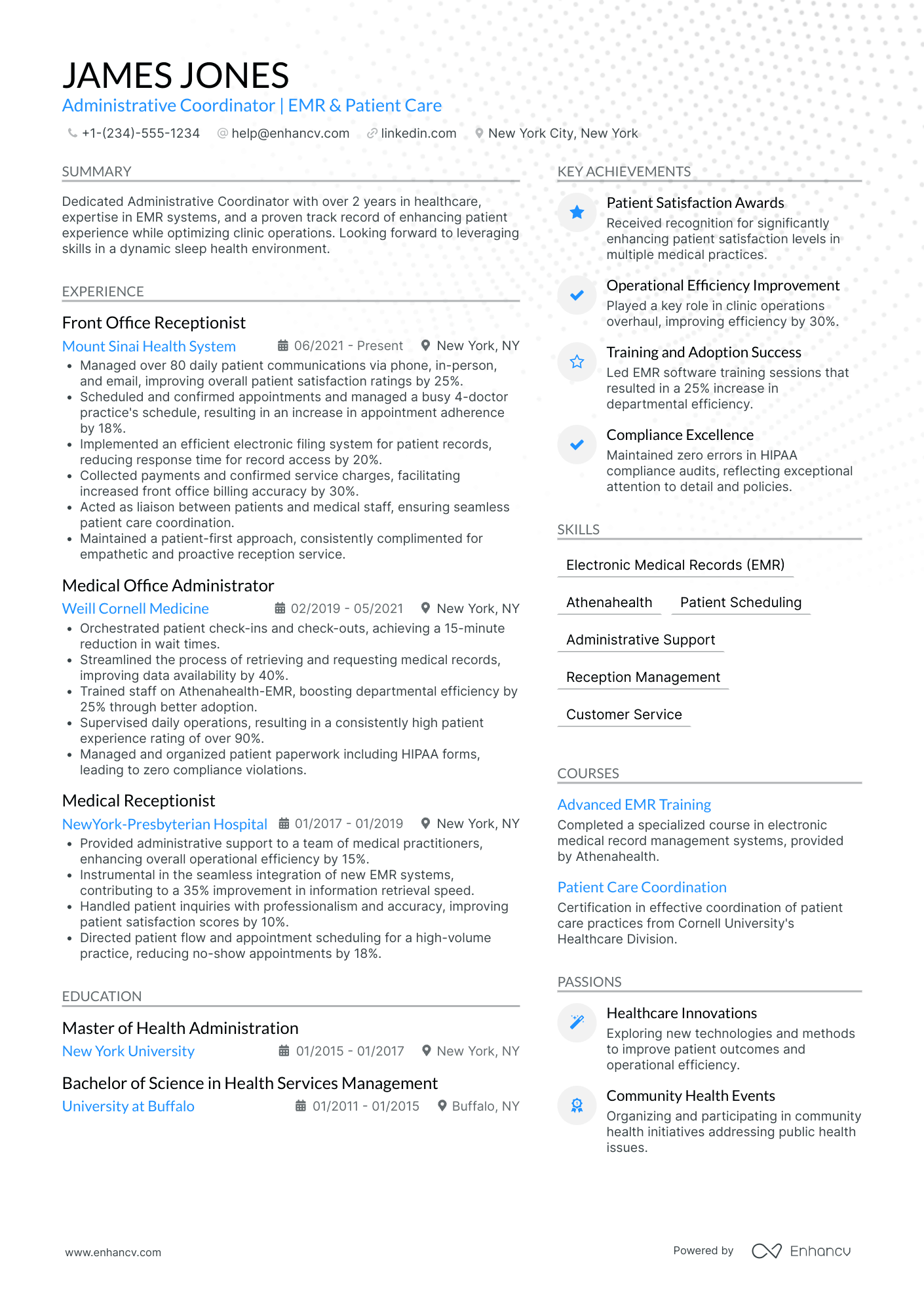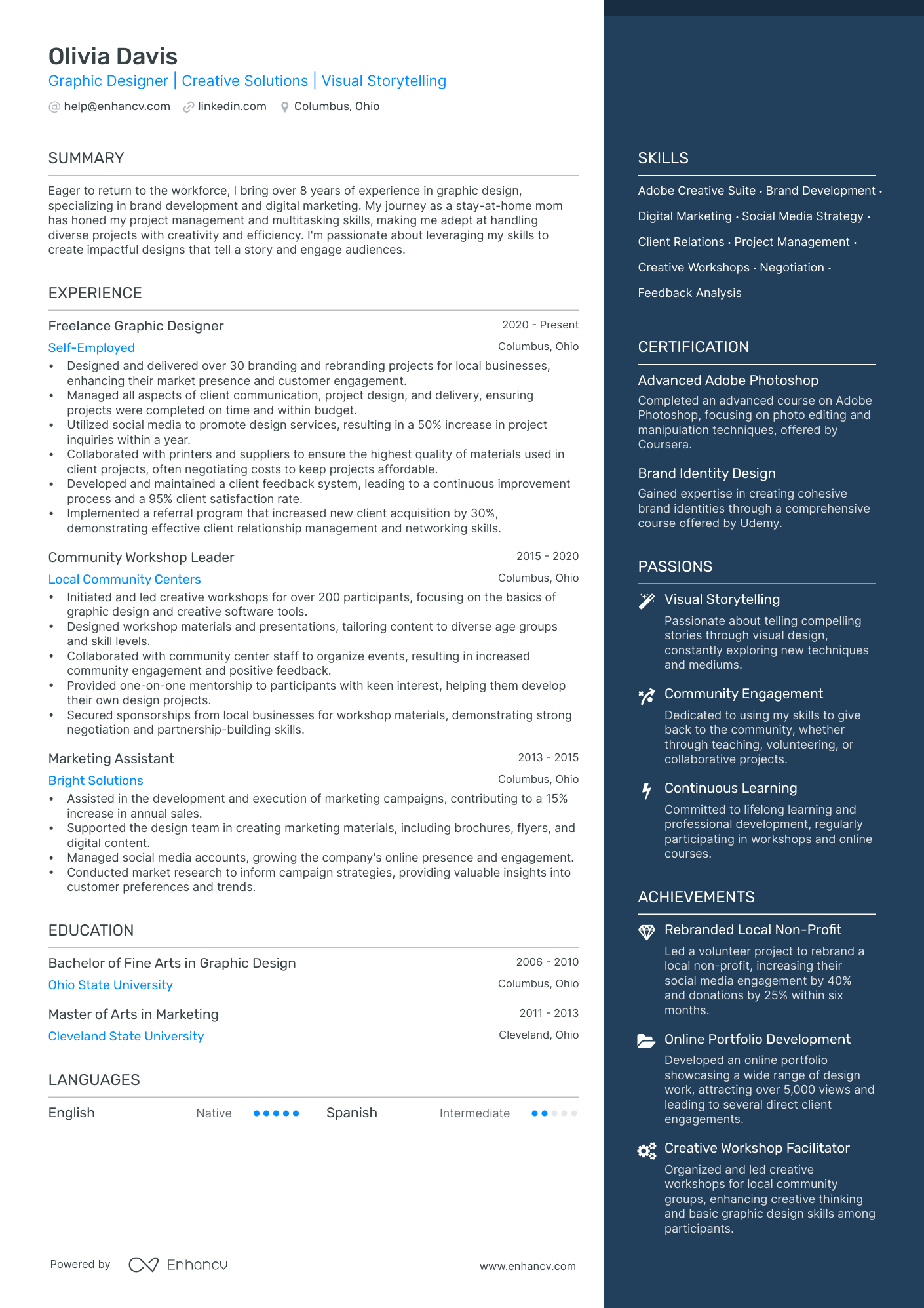Over half of stay-at-home moms in the US point to expensive childcare as the main barrier to re-entering the workforce. Indeed, navigating the complexities of childcare while remaining socially active can be a challenge.
If this strikes a chord, chances are you're a SAHM (stay-at-home mom) thinking about making a return to work.
Luckily, stay-at-home parenting does not exclude having a job. And if you’re among those 57% of SAHMs worried that their employment gap might put off potential employers, there's good news. You can craft a stay-at-home mom resume with no experience and still get noticed.
This guide is designed to empower you to highlight your skills and experiences, crafting an impactful SAHM resume that stands out. Here's how:
- Create a stay-at-home mom resume that convincingly translates full-time parenting skills to the professional realm;
- Leveraging your employment gap as an asset by strategically emphasizing your skills and experiences in your resume;
- Avoid stereotypes and biases with a selection of real-life resume examples from stay-at-home moms.
Let’s get to it.
Stay-at-home mom resume example
Here’s what this applicant does well in their resume:
- Highlighting transferable skills: Olivia highlights her time as a stay-at-home mom to showcase her knack for project management and multitasking. She shows that personal experiences can evolve into professional assets, especially her creative and efficient project handling, key for graphic design.
- Showcasing freelance experience: Olivia's resume shines a light on her freelance graphic design projects. She outlines key successes, like boosting project inquiries and client satisfaction, proving her professional drive and success, even during a career pause.
- Promoting continuous professional development: The candidate lists certifications and a zeal for ongoing learning, showing her dedication to keeping her skills sharp and relevant for graphic design work.
- Leveraging community engagement: Featuring her work as a Community Workshop Leader, Olivia displays her leadership and educational skills. This role underlines her willingness to contribute to the community and collaborate with diverse teams, essential for client-based projects.
Now let’s dive into organizing all these strengths and talents within a resume.
How to format a stay-at-home mom resume
Facing a significant employment gap might seem daunting, especially when re-entering the job market. Yet, if motherhood is the primary reason for your career hiatus, this experience can be reframed positively on your resume.
The point is to choose the resume format that best fits your circumstances. Here are the three most fitting layouts for stay-at-home moms returning to the workforce.
- The reverse chronological resume. Ideal for those with substantial experience before taking maternity leave. This format is highly favored by recruiters and can effectively minimize the impact of a 2-year gap, particularly in the post-pandemic job market. Tailor your resume to each job application and consider including a cover letter for a personal touch.
- The hybrid resume. A combination resume works well for those eyeing a career shift or who have been out of the workforce for 3-4 years. It blends your skills and experiences, focusing on your competencies rather than the chronological order of your employment.
- The functional resume: Best suited for individuals with a career gap of more than 4 years, this format emphasizes professional strengths and skills over employment history. Remember, transparency is key; you can acknowledge your role as a homemaker while still highlighting your capabilities.
And to make sure that you really nail your resume, here are a few additional formatting tips for a SAHM resume:
- Length: Aim for a concise format, one or two pages max, ensuring plenty of white space for readability.
- Fonts: Don’t rely on crazy fonts to impress recruiters. Rubik, Lato, Montserrat, Raleway, Exo 2, and Volkhov work perfectly fine. All serif fonts are ATS-friendly.
- File Format: Go with PDF when exporting your stay-at-home mom resume. It retains its formatting across all devices and platforms.
Be mindful of regional differences in resume formats – a Canadian layout, for instance, might vary.
Is your resume good enough?
Drop your resume here or choose a file. PDF & DOCX only. Max 2MB file size.
After choosing a resume format, it’s time to decide on the best sections to feature on your resume to help your talents shine bright.
The top sections on a stay-at-home mom resume:
- A resume summary providing a brief overview of your skills, experience, and career objectives, showing how they align with the demands of the targeted role.
- A strong skills section that showcases transferable skills gained from parenting, such as time management and organizational abilities.
- A work experience section detailing your work history. It could involve formally employed roles, or even the management and planning that goes into running a household.
- A detailed education and certifications section with relevant academic qualifications, trainings, or workshops that you’ve attended. This would demonstrate your commitment to continuous learning.
- An additional section for personal projects or community involvement. This section will highlight your extracurricular engagements, such as community service, charity work, or even personal projects like a blog. It will provide a more comprehensive profile of your skills and interests.
For stay-at-home moms, these top resume sections will best showcase the skills that recruiters are seeking.
What recruiters want to see on your resume:
- Demonstrated organizational skills: Stay-at-home moms often juggle multiple tasks and schedules simultaneously, skills that recruiters value in a variety of job roles.
- Problem-solving abilities: As a stay-at-home mom, quick and effective problem-solving is a necessity. This is a highly sought-after skill in many work scenarios.
- Time management: Managing the varying needs and schedules of a household showcases strong time management, a skill highly valued by recruiters in all fields.
- Adaptability: Stay-at-home mothers need to adapt rapidly to changing situations and events, demonstrating flexibility and resilience which are highly favored in the professional world.
- Strong communication skills: Being a central point of communication within a family demonstrates the ability to mediate, negotiate, and express oneself clearly and effectively.
With a clear focus in mind, you can start building your resume experience section.
How to write your stay-at-home mom resume experience
The experience section often stirs anxiety among stay-at-home moms, worrying about whether to list their role as a homemaker. The most common fear is that this might not be seen as relevant.
However, it's essential to include this phase of life, as recruiters look for explained career gaps. (Plus, you’re a proud mom, of course, you’d put it on your resume)!
The best advice here is to focus on the skills and achievements during this time, such as managing projects, organizing events, or any freelance work. Highlighting these experiences demonstrates valuable competencies like time and people management, organizational skills, and multitasking.
Naturally, if you do have a work history before taking your maternity leave, include it in your resume.
Now let’s take a look at two resume examples.
- •Managed household budget.
- •Participated in community support groups.
- •Helped the children with assignments.
- •Enrolled in a basic programming course.
Clearly, this applicant didn’t make the most of her experience as a stay-at-home parent. She merely listed a few responsibilities. Here are three mistakes:
- No specific relevance. The bullets don’t directly translate to specific professional requirements. Employers look for experiences that are transferable to a range of roles.
- Sparse action verbs. To demonstrate agency you need to choose your words more wisely. For example, “participated” could have been “organized”. Action verbs provide clarity and dynamism to resume entries, effectively showcasing your initiative and impact.
- Lack of description. This is a missed opportunity to amplify the candidate’s responsibilities as a stay-at-home mom. Providing descriptions allows for a better understanding of the skills and values a stay-at-home mom brings to potential employers.
- •Managed household budget and finances, achieving a 20% reduction in expenses through strategic planning and cost-effective purchasing.
- •Organized weekly community support groups, enhancing local engagement and support networks, showcasing event planning and community-building skills.
- •Developed and implemented a home-based learning curriculum for early childhood education, promoting cognitive and social development.
- •Completed a 6-month intensive C# programming course, acquiring key software development skills and laying the foundation for advanced technical problem-solving.
Now, this candidate understood the assignment. Let’s see why.
- Demonstrates transferable skills: The section highlights a range of transferable skills, such as organization, community engagement, and technical proficiency, which are valuable in many professional settings.
- Quantifiable achievements: Activities are presented with outcomes that suggest measurable impact, like enhancing local engagement and promoting cognitive development. This adds credibility and substance to the candidate's experience.
- Shows continuous learning and adaptability: Completing a 6-month intensive programming course illustrates a commitment to personal and professional growth.
How to quantify impact on your resume
The impact of your experience as a SAHM on your resume can significantly improve your chances of getting a job. It makes your skills and contributions clear and measurable to potential employers.
Here are essential tips for incorporating quantifiable metrics into each section of your stay-at-home mom resume:
- Include the number of years you've managed household finances, illustrating your financial prowess.
- Specify the number of events you've coordinated (such as family gatherings or fundraisers), indicating your project management and organizational ability.
- Listing the number of languages you're proficient in as a polyglot shows strong communication skills and adaptability, vital skills in most workplaces.
- State the number of people involved in any community projects you have led, showing your skills in rallying groups and leading teams.
- Include the number of children you manage daily schedules for, demonstrating adeptness in juggling multiple tasks and responsibilities.
- Specify the difference in spending before and after you took over the household budgeting, demonstrating your ability to optimize costs.
- Mention the frequency of educational activities you arranged for your child/children, as this could indicate a commitment to development and learning, critical in a professional environment.
- Incorporate the number of online courses or workshops you completed during your stay-at-home period, as this demonstrates continuous learning and improvement.
How to write a stay-at-home mom resume with no experience
For a SAHM with minimal professional experience, resume building can feel like a daunting task. However, there's a silver lining: your resume can still make a strong impression on job recruiters.
It's all about strategizing effectively!
Remember what we did with the experience section? You can easily employ this technique and focus on skills or freelance projects relevant to your career development.
- Volunteer experience: If relevant to the job you’re applying for, volunteering can highlight your involvement in community service, school committees, or local organizations. Including specific achievements, such as organizing events or leading projects, shows recruiters your initiative and project management skills, even outside a traditional work environment.
- Certifications and courses: Listing relevant certifications, online courses, or workshops you've completed during your time as a stay-at-home mom can bridge the gap in professional experience. This section indicates your dedication to personal development.
- Skills and competencies: Tailoring this part to showcase transferable skills such as time management, organizational abilities, financial planning, and communication can add immense value.
Here’s a tip. If you have any hobbies or interests you consider applicable to the job you are applying for, do add them in a separate section. Learning languages with Duolingo in your free time? This hobby showcases your ability to commit to a long-term goal and enhances your communication skills across diverse cultures. Who knows, it might land you a job in an international organization.
How to list your hard and soft skills on your resume
Hard skills are about your technical know-how, like using software, while soft skills cover your ability to communicate, lead, and solve problems. Both are key to a strong resume.
When adding skills to your resume, mix hard and soft skills to show your range, drawing from your experiences, including your time as a SAHM. This helps employers see how your skills fit their needs.
For hard skills, consider tasks where you used specific knowledge, like budgeting for your household, teaching your kids with educational software, or planning digital-based community events.
Best hard skills for your stay-at-home mom resume
- Budgeting
- Financial Planning
- Project Management
- Advanced Microsoft Office Skills
- Digital Communication Tools (Slack, Zoom, Microsoft Teams)
- Social Media Management
- Blogging Platforms (WordPress, Blogger)
- Online Research Tools
- Scheduling Software
- Basic Graphic Design (Canva, Adobe Spark)
- E-commerce Platforms (Shopify, Etsy)
- Bookkeeping Software (QuickBooks, Zoho Books)
- Online Education Platforms (Khan Academy, Coursera)
- Email Marketing (Mailchimp, Constant Contact)
- CRM Software (Salesforce, HubSpot)
- Photoshop or other Photo-Editing Software
- Web Analytics (Google Analytics, SEMRush)
- Video Editing Software (Adobe Premiere, iMovie)
- HTML or CSS Basic Knowledge
- E-learning Software (Moodle, Google Classroom)
Soft skills can be showcased by thinking about your interactions with others and how you've cared for your family. Skills like leadership, time management, and adaptability are ones you've probably developed through parenting.
Best soft skills for your stay-at-home mom resume
- Multitasking
- Time Management
- Organizational Skills
- Conflict Resolution
- Problem-Solving
- Adaptability
- Decision-Making
- Patience
- Communication Skills
- Empathy
- Creativity
- Stress Management
- Collaboration
- Leadership
- Motivational Skills
- Delegation
- Negotiation Skills
- Critical Thinking
- Emotional Intelligence
- Resilience
You can show off your skills in more places than just the skill section of a resume. In the Experience section, explain how you've used your skills in real life. Also, in the Volunteer Work or Projects sections, talk about times when your skills helped achieve good results. And remember to add numbers to make your point when you can.
How to list your certifications and education on your resume
Highlighting your education is essential. Seize every chance to add substance to your resume.
Next, think about including relevant certifications. These not only demonstrate your skills and commitment to growing professionally but also shift attention away from that dreaded employment gap.
Below are five valuable certifications that can boost your resume and impress recruiters.
Best certifications for your stay-at-home mom resume
- Project Management Professional (PMP)
- Certified Professional in Learning and Performance (CPLP)
- Microsoft Certified: Office 365 Fundamentals
- Google Analytics Academy Certification
- Certified Associate in Project Management (CAPM)
How to write your stay-at-home mom resume summary or objective
When building your SAHM resume, get creative and include sections that best showcase your skills. However, don't overlook crafting a compelling summary or objective. This brief introduction often catches an HR manager's attention first, and if it's engaging, they're more likely to continue reading.
If you've been on maternity leave for an extended period, a resume objective might be your best choice. While resume summaries are ideal for those with extensive experience, objectives serve as your pitch to potential employers.
Here’s why objectives are particularly fitting for stay-at-home moms with a career gap:
- They're concise and punchy, ideally no more than three sentences.
- They highlight your strengths without the need to summarize your entire work history.
- Objectives clarify how you plan to contribute to the company's success, showing recruiters your potential value.
Let’s look at two examples of resume objectives, wrong and right.
This example says nothing about the candidate’s proposition. To enhance it, they could have:
- incorporated stronger adjectives to strengthen their self-description;
- used less tentative language to avoid any hints of uncertainty or apathy;
- chosen more effective vocabulary to tell the story of their professional journey (that’s right, they’re writing a story about their professional self).
This one is so much better. Here’s why:
- It’s only three sentences but they simply ooze enthusiasm (5 words capturing readiness).
- The objective centers on the candidate's competencies and skills.
- The last sentence subtly reveals an open and approachable personality, a valuable asset to any team.
Optimize your resume summary and objective for ATS
Drop your resume here or choose a file.
PDF & DOCX only. Max 2MB file size.
Additional sections for a stay-at-home mom resume
Enriching your SAHM resume with a special section for your side hustles and community contributions can really make it stand out. If you're like many stay-at-home moms who've found ways to stay active and engaged, consider sharing:
- Your blogging or social media endeavors: This isn't just a hobby; it's a showcase of your prowess in creating engaging content and navigating the digital marketing landscape. It speaks about your ability to captivate an audience, manage digital initiatives, and stay ahead with modern marketing tactics.
- Your freelance or consulting projects: Have you dabbled in freelance work or consulting? This is the perfect place to highlight your entrepreneurial spirit and independence.
- Your volunteer work: Giving your time and talents to causes and organizations reflects more than just goodwill. It's a testament to your ability to collaborate, communicate effectively, and plan events. For SAHMs preparing to re-enter the workforce, such volunteering underscores a commitment to your principles and the community, while honing skills that employers value.
Key takeaways
If you're squeezing in resume planning between mom duties, here's a swift rundown of how to craft that standout stay-at-home mom resume:
- Pick a resume format that suits your employment history. Remember, a chronological resume might not be your go-to if you've had a long gap since your last job.
- Highlight resume sections that showcase the skills and responsibilities you've embraced during your time as a mom, steering clear of listing basic skills.
- Make your experience section pop with measurable achievements, and avoid simply naming household tasks.
- Include both hard and soft skills that you can apply in various job roles.
- Don't forget to list any relevant certifications that bolster your qualifications.
- If you've engaged in freelance or community initiatives, dedicate a section to these projects to demonstrate your active engagement and versatility.
Stay-at-Home Mom resume examples
By Experience
By Role
